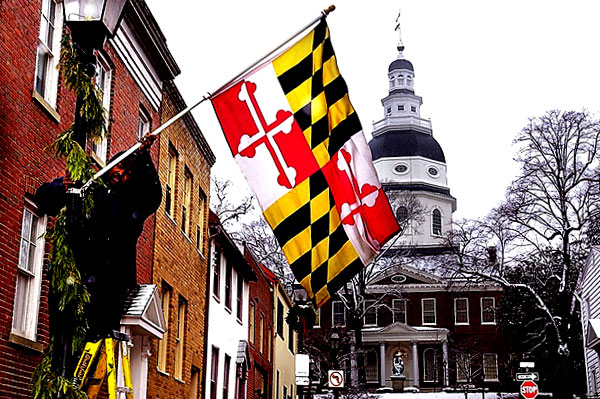
1.01 - The Maryland flag was adopted as the State flag by an act of the General Assembly in 1904 (General Provisions Article, §13-201).
1.02 - The Maryland flag is divided into four quarters. The first and fourth quarters consist of six vertical bars alternately yellow (representing gold) and black with a diagonal band on which the colors are reversed. The yellow and black quarters represent the family arms of the first proprietor of Maryland, George Calvert, first Lord Baltimore. The second and third quarters consist of a quartered field of red and white (representing silver) bearing a Greek cross with arms terminating in trefoils. The colors in the second and third quarters alternate, with red on the white ground and white on the red. The red and white quarters display the arms of Lord Baltimore's maternal family, the Crosslands.
1.03 - The diagonal band in each Calvert quadrant of the Maryland flag should be centered at the corners.
1.04 - The red and yellow colors in the Maryland flag should conform to the following Pantone Marking System colors:
- red on coated stock-PMS 201
- red on uncoated stock-PMS 193
- yellow on coated stock-PMS 124
- yellow on uncoated stock-PMS 124
1.05 - The Maryland flag should be folded and stored in a way to preserve it from damage.
1.06 - When the condition of the Maryland flag is such that it is no longer fit for display, it should be disposed of in the same manner as the U.S. flag, preferably by burning, and with the same dignity as is accorded the disposal of the U.S. flag.
1.07 - The Maryland flag in its present form was not flown until after the Civil War. When a Maryland banner is desired for pageants, reenactments, commemorations, and other historical occasions, it may consist of the yellow and black Calvert colors displayed as in the first quarter of the Maryland flag. Two pennants, one black and the other yellow, flown on separate staffs may also be appropriately used for historical commemorations and events.